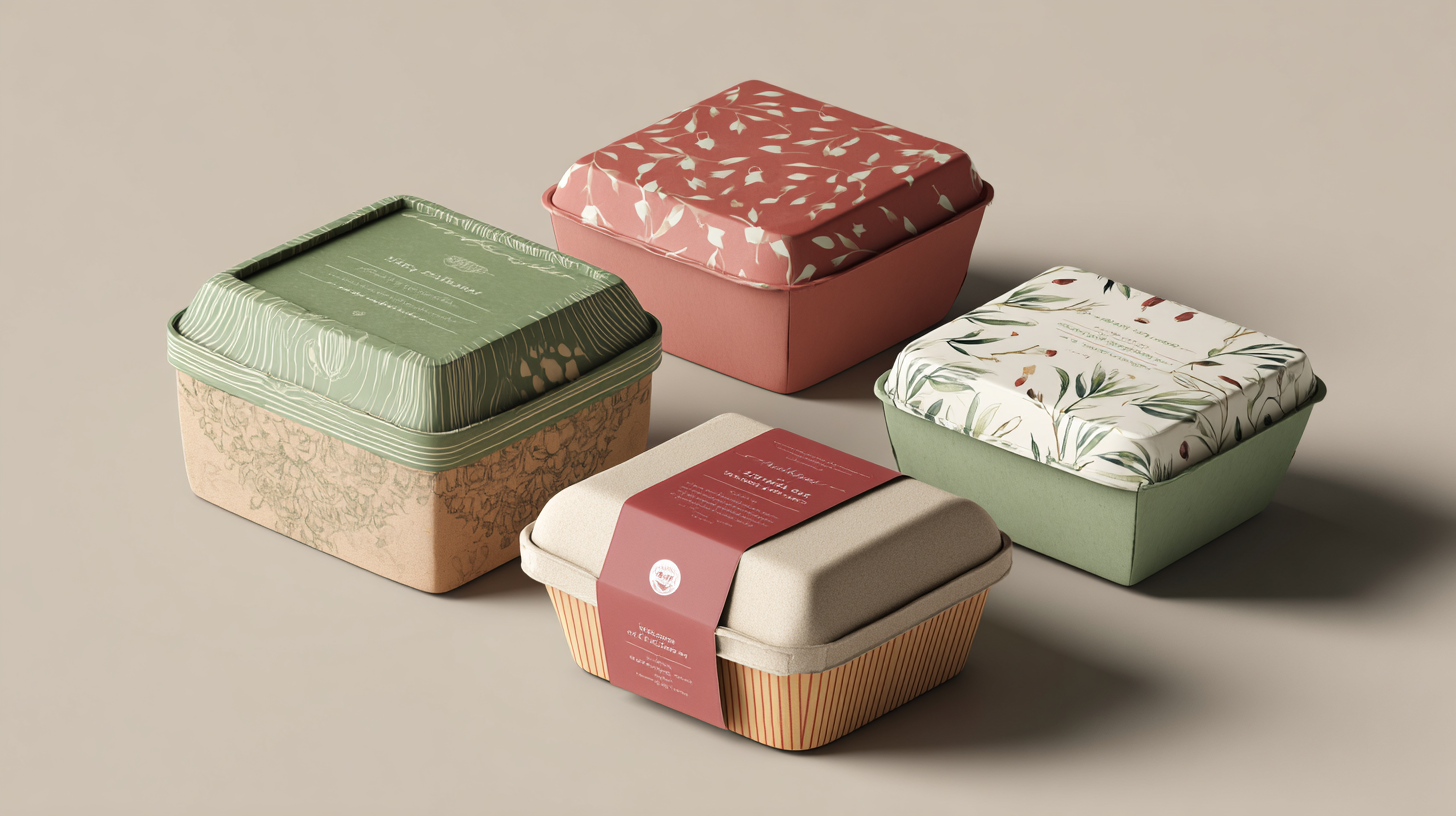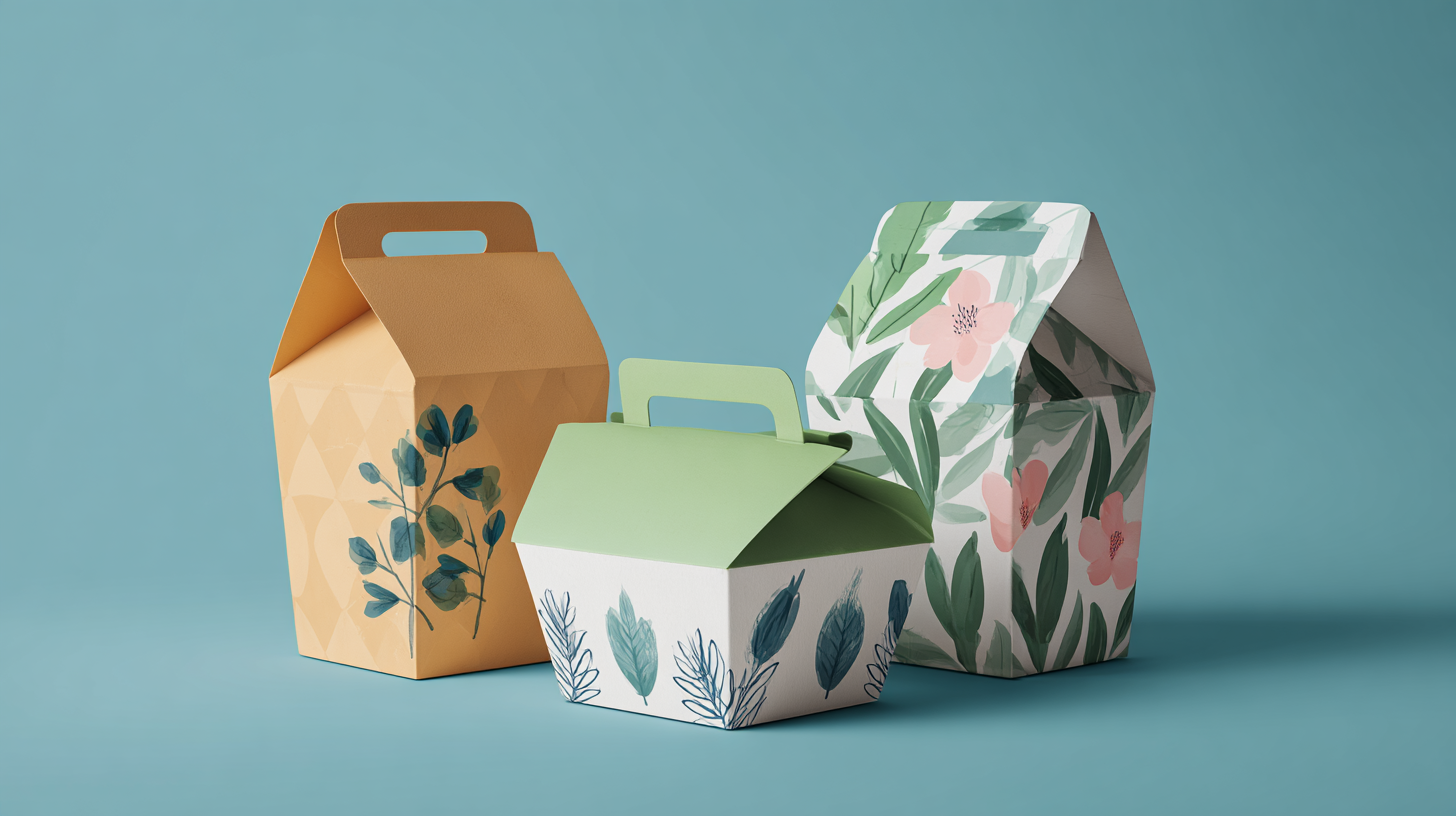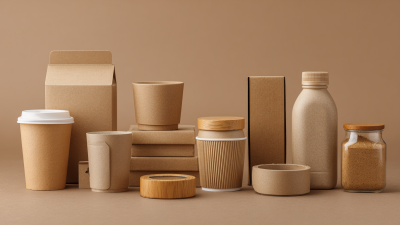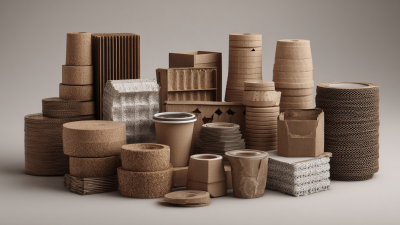Exploring Sustainable Trends in Food Packaging Design for a Greener Future
The pressing demand for sustainable food packaging design has become increasingly significant in recent years, as environmental concerns take center stage in the global conversation about sustainability. According to a report from Smithers Pira, the sustainable packaging market is expected to reach $500 billion by 2025, reflecting a growing consumer preference for eco-friendly materials and designs. This shift is not only a response to regulatory changes but also driven by consumer awareness and the need for brands to align with more responsible practices.
Expert in the field, Dr. Laura Thomas, a leading researcher on sustainable materials, emphasizes that "the future of food packaging design lies in innovation that prioritizes both functionality and environmental integrity." Her insights underline the crucial role of designers and businesses in developing solutions that minimize waste and utilize biodegradable materials, ultimately contributing to a healthier planet. As we delve into the top five trends in sustainable food packaging design, it becomes evident that these practices are not merely trends but essential steps toward a greener future.

Innovative Materials Paving the Way for Eco-Friendly Food Packaging
As the food industry increasingly prioritizes sustainability, innovative materials are at the forefront of eco-friendly packaging design.
 Biodegradable plastics, made from natural sources such as corn starch and sugarcane, are gaining popularity for their ability to decompose more quickly than traditional plastics.
Additionally, plant-based coatings are being developed to enhance the shelf life of products without adding harmful chemicals, thereby reducing environmental impacts.
Biodegradable plastics, made from natural sources such as corn starch and sugarcane, are gaining popularity for their ability to decompose more quickly than traditional plastics.
Additionally, plant-based coatings are being developed to enhance the shelf life of products without adding harmful chemicals, thereby reducing environmental impacts.
Tips for Choosing Sustainable Packaging:
When selecting food packaging, look for options that use recycled materials or are certified compostable. Opting for packaging that minimizes excess materials can also significantly reduce waste. Consider supporting brands that commit to sustainable practices; your purchasing power can drive more companies toward greener alternatives.
Furthermore, innovative designs like reusable containers are becoming more common, encouraging consumers to participate in sustainability efforts. These solutions not only reduce single-use waste but also foster a culture of reusability.
Embracing such trends is crucial for a greener future in food packaging, ensuring we preserve our planet for generations to come.
Biodegradable and Compostable Solutions: A Sustainable Breakthrough
The push for sustainable food packaging design has gained momentum in recent years, particularly with the emergence of biodegradable and compostable solutions. These innovative materials, derived from natural sources such as plant starches, cellulose, and other organic matter, offer a promising alternative to traditional plastics. Unlike conventional packaging, which can take centuries to decompose, biodegradable options break down more swiftly and efficiently in environmental conditions, thereby reducing landfill contributions and environmental pollution.
Compostable packaging goes a step further by not only decomposing but also enriching the soil when processed properly. This type of packaging can transform from waste into valuable compost that nurtures future crops. Many businesses are adopting these materials, recognizing that consumers increasingly prioritize sustainability in their purchasing decisions. By investing in biodegradable and compostable packaging, food brands not only align with environmental goals but also enhance their brand image, demonstrating a commitment to a greener future and responsible consumption practices.
Minimalist Packaging Designs: Reducing Waste and Enhancing Appeal
 Minimalist packaging design has emerged as a pivotal solution in addressing the global challenges of waste and sustainability. By stripping away unnecessary elements and focusing on essential features, minimalist packaging not only reduces material consumption but also enhances visual appeal. This design philosophy prioritizes simple, clean lines and functional forms, allowing consumers to appreciate the product itself while minimizing environmental impact. The use of fewer inks and materials translates to a lower carbon footprint, contributing to a greener future.
Minimalist packaging design has emerged as a pivotal solution in addressing the global challenges of waste and sustainability. By stripping away unnecessary elements and focusing on essential features, minimalist packaging not only reduces material consumption but also enhances visual appeal. This design philosophy prioritizes simple, clean lines and functional forms, allowing consumers to appreciate the product itself while minimizing environmental impact. The use of fewer inks and materials translates to a lower carbon footprint, contributing to a greener future.
Moreover, minimalist designs often encourage conscious consumer behavior. Packaging that showcases the product in its purest form invites customers to connect with the brand ethos centered around sustainability. This approach has the dual benefit of reducing waste and fostering brand loyalty among environmentally aware consumers. Companies adopting minimalist packaging stand out in a crowded market, appealing to those who value design aesthetics as well as ecological responsibility. As the demand for sustainable practices continues to grow, embracing minimalist packaging represents not just a trend, but a necessary shift toward more responsible consumption in the food industry.
The Role of Technology in Developing Sustainable Packaging Techniques
The increasing focus on sustainability has led to remarkable innovations in food packaging design, with technology playing a crucial role in this transformation. Modern advancements are not only enhancing the functionality of packaging but also ensuring it aligns with ecological practices. Techniques such as bioplastics, which are derived from renewable sources, are at the forefront, enabling the reduction of plastic waste. Moreover, smart packaging technologies, including QR codes and sensors, allow consumers to track freshness and sustainability, thus promoting responsible consumption.
**Tips:** Consider using materials that are compostable or easily recyclable. Look out for certifications that validate the sustainability of packaging products, such as FSC or Cradle to Cradle. Embrace minimalistic packaging designs that reduce excess material use while maintaining product safety.
Additionally, the integration of digital technologies, such as blockchain, is revolutionizing supply chain transparency. This not only helps businesses monitor their ecological impact but also educates consumers about the environmental footprint of their food choices. As we move towards a greener future, embracing these technological advancements in packaging design is essential for building a sustainable food system.
**Tips:** Regularly review and assess the impact of your current packaging solutions. Engage with suppliers who prioritize sustainability and innovative practices. Foster collaboration within the industry to share best practices and drive collective progress towards environmentally friendly packaging solutions.
Consumer Trends Driving the Shift Towards Greener Packaging Options
In recent years, the increasing consumer awareness surrounding environmental sustainability has significantly influenced the packaging industry. According to McKinsey, the growth of packaging businesses in emerging Asian markets reflects a major shift towards more sustainable options, driven by consumers' preferences for convenience and eco-friendly practices. With over 40% of consumers actively engaging in green initiatives such as "rebirth consumption," the demand for sustainable packaging solutions is accelerating. This trend indicates that businesses must adapt their offerings to align with environmental values, thereby capturing the attention of a more conscientious consumer base.
Furthermore, the forecast for the bakery packaging market from 2025 to 2033 highlights a vital area for innovation with the introduction of flexible and rigid sustainable materials. The projected growth in this sector underscores the necessity for manufacturers to rethink their packaging designs, emphasizing materials that can reduce waste and promote recycling. By embracing these consumer trends, companies can not only enhance their market positioning but also contribute to a greener future, fostering a circular economy where products are refurbished, reused, or recycled, ultimately leading to a more sustainable industry framework.
Related Posts
-

The Ultimate Guide to Choosing Eco Friendly Packaging Supplies for Your Business
-

Innovative Packaging Materials Transforming Sustainability in the Modern Age
-

Transforming Sustainability in Food Packaging: How Eco-Friendly Materials are Reshaping Consumer Choices
-

The Ultimate Guide to Sustainable Packaging Supplies for Eco-Friendly Businesses
-

Innovative Trends in Food Packaging Design You Need to Know for Sustainable Choices
-

Revolutionizing Sustainable Food Packaging Solutions for a Greener Future
